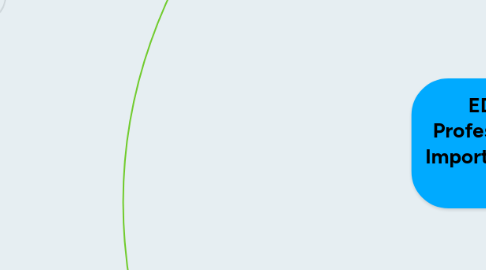
1. Historical Perspectives
1.1. Aboriginal education
1.1.1. Chapter 8 Building bridges part 2 Indigenous learners. Ways of teaching and understanding Aboriginal students.
1.1.1.1. Chapter 8: " Building Bridges Part 2 Indigenous Learners". Web 30 Jan. 2014.
1.1.2. First Nations Education Funding
1.1.2.1. Including culture and tradition in the curriculum to resolve the trauma that First Nations people suffered throughout generations. Discussion about readings. Deborah's Teaching Philosophy.
1.1.2.1.1. Graveland, B. Harper Outlines Plans to Retool Native Schools. Web 11 February 2014.
1.1.2.1.2. Roman, K. (2014).First Nations to gain greater control of education system, more funding. Retrieved from:http://www.cbc.ca/news/politics/first-nations-to-gain-greater-control-of-education-system-more-funding-1.2525759
1.1.2.1.3. Laboucane, R. (2010).Canada’s Aboriginal education crisis, volume28.http://www.ammsa.com/publications/windspeaker/canada’s-aboriginal-education-crisis-column
1.1.2.1.4. Fox Lake Elementary Singers. (2014). I believe. Retrieved from:https://www.youtube.com/watch?v=5rLg9XEn7mc
1.2. Factors that make up the educational system and its differences from other places/ settings.
1.2.1. Frank Peters talks about school structure, purpose of schools, and Alberta's educational system. Read the education act and school act.
1.2.1.1. Peters, F. (personal communication, February 4, 2014).
1.2.1.2. Alberta Queen's Printer. (2012). Education Act. Retrieved fromhttp://www.qp.alberta.ca/1266.cfm?page=e00p3.cfm&leg_type=Acts&isbncln=9780779769346
1.2.1.3. Alberta Queen's Printer.(2012). School Act. Retrieved from:https://eclass.srv.ualberta.ca/Who%20is%20taught%20and%20how?%20How%20are%20education%20and%20schools%20organized?%20Levels%20and%20kinds?%20Where%20does%20teaching%20in%20schools%20occur?%20What%20is%20it%20like%20to%20teach%20in%20schools%20(versus%20other%20places)?%20What%20are%20the%20different%20ways%20of%20teaching?%20Guest%20Speaker%20(Frank%20Peters%20or%20TBA?)%20Topics%20Covered%20•%20organization%20of%20Alberta%20K-12%20Schooling%20(boards,%20divisions,%20and%20districts.)%20•%20the%20purposes%20of%20schools;%20•%20nontraditional%20schools;%20•%20the%20structure%20of%20school;%20•%20resources.%20%20Core%20Reading:%20Allison,%20D.%20R.%20Gidney%20&%20J.%20Paquette%20(1984).%20“The%20Control%20of%20Public%20Education%20in%20Canada:%20An%20Introduction”%20or%20substitute.%20%20Complementary%20Background%20Materials:%20Education%20Act%20http:/www.qp.alberta.ca/1266.cfm?page=e00p3.cfm&leg_type=Acts&isbncln=9780779769346%20School%20Act%20http:/www.qp.alberta.ca/1266.cfm?page=s03.cfm&leg_type=Acts&isbncln=9780779733941
1.2.1.4. Kachur, J. L., & Harrison, T. W. (1999). Public Education, Globalization, and Democracy: Whither Alberta? In Contested Classrooms, Edmonton: University of Alberta Press /Parkland Institute. P. 201-216.
1.2.2. Eugenics ( video by Ken Robinson), online discussion about the video, Diversity and Inclusion
1.2.2.1. Robinson, K. (2010)."Changing Education Paradigms” critique of the industrial structural model of schooling). Retrieved from:http://www.youtube.com/watch?v=zDZFcDGpL4U
1.2.2.2. Surviving Eugenics in the 21st Century. (2014). Retrieved from:http://www.youtube.com/watch?v=IO8YrE8qmPA
1.2.2.3. Barakett, J. & Cleghorn, A. (2007). “The School as an Informal System of Socialization” in Sociology of Education: An Introductory View from Canada. (CP)
2. Socioligical Perspectives
2.1. Professional Identity, different roles of students and teachers in class. Teachers working on different communities.
2.1.1. Guest speaker Mark Yurick from The Alberta Teacher's Association. Discussion about professionalism, different responsibilities and different working conditions. Professional relationships in class, school and community in province. Class activity using Blooms Taxonomy follow up with the discussion assignment.
2.1.1.1. Yurick, M. (personal communication, January 21, 2014)
2.2. Classroom Management, Diversity& Inclusion.
2.2.1. Discussion of types of theories that involves with classroom management.
2.2.1.1. Education and Diversity: Framing the Issue.(p. 159, 2013).(CP).
2.2.1.2. Alberta Teachers Association.Here Comes Everyone: Teaching in the Intercultural Classroom. Retrieved fromhttp://www.teachers.ab.ca/sitecollectiondocuments/ata/publications/human-rights-issues/mon-3%20here%20comes%20everyone.pdf
2.3. Gender Identity
2.3.1. Understanding different types of gender orientation and gender identity. Guest speaker Malinda McNie.
2.3.1.1. McNie, M. (personal communication, March 20, 2014).
2.3.1.2. Walton, G. (2004). “Bullying and Homophobia in Canadian Schools,” in Journal of Gay & Lesbian Issues in Education. 1(4), pp. 23-36. (ER)
2.3.1.3. Wallace, J.(2007). Inclusive schooling and gender. Retrieved from:http://www.teachers.ab.ca/For%20Members/Professional%20Development/Diversity%20and%20Human%20Rights/Gender%20Equity/Pages/Inclusive%20Education.aspx#inclusive-schooling-and-gender
3. Philospphical Perspectives
3.1. What is education, what means to be an educator, why teaching is in a University?
3.1.1. Brief Introduction about education as a profession, as a teacher and why is it a degree.
3.1.1.1. Coates, K.S., & Morrison, B. (2011). I. A Student's Guide to University. In Campus Confidential: 100 Startling Things You Don't Know About Canadian Universities. (pp. 17-29) CP. Toronto: James Lorimer & Company Ltd.
3.1.1.2. Anuik, J (2012). "What and Why Do I Want to Know?" Locating the Spirit in a First- year inquiry Class. 2(1), 1-4 (CP)
3.2. Concept of Teacher Identity
3.2.1. Watched three video clips of three different teachers in three different grade levels.
3.2.1.1. Teaching Channel. (2014, January, 14).Let’s Count: Learning Numbers in Various Ways - Rosemary Kungu – Kindergarten. Retrieved from: https://www.teachingchannel.org/videos/pre-k-math-lesson
3.2.1.2. Teaching Channel. (2014, January, 14).Let’s Count: Learning Numbers in Various Ways - Rosemary Kungu – Kindergarten. Retrieved from: https://www.teachingchannel.org/videos/pre-k-math-lesson
3.2.1.3. Teaching Channel. (2014, January, 14).Exploring Non-Traditional Sounds Tony Leong – high school Music. Retrieved from: https://www.teachingchannel.org/videos/music-lesson-non-traditional-sounds
3.2.2. Hoff, J. (2014, January, 14).Empowering the People: The Aboriginal Teacher Education Program. Retrieved from:http://beditionmagazine.com/empowering-the-people-the-aboriginal-teacher-education-program/
3.2.3. Holubitsky, J. (2002).A day in the life ...: [Final Edition]. Retrieved from:http://search.proquest.com.login.ezproxy.library.ualberta.ca/docview/253000677?accountid=14474
3.3. What is schooling and education?
3.3.1. In-class discussion with guest speakers Dr Gleddie and Greg Thomas about teaching philosophy. Readings about the different types of philosophies that can be used in class together with the philosophy inventory.
3.3.1.1. Gleddie. Elementary Education. (personal communication, January 16, 2014).
3.3.1.2. Thomas, G. Secondary Education. (personal communication, January 16, 2014).
3.3.1.3. Chapter 2: Your Philosophy of Education.(pp. 38-67). Web. 16 Jan. 2014.
3.4. How knowledge can be teach in different ways.
3.4.1. Thomas King:The Truth About Stories Part 1. Online discussion about professionalism. Combining different Philosophical views in education. Discussion about the video "the giving tree. Did my personal philosophy of education: work in progress. Made use of the philosophy chapter and inventory sheet.
3.4.1.1. King, T. (2003).The 2003 CBC Massey Lectures, "The Truth about Stories: A Native Narrative". Retrieved from:http://www.cbc.ca/ideas/massey-archives/2003/11/07/massey-lectures-2003-the-truth-about-stories-a-native-narrative/
3.4.1.2. Harper& Row .(1964). The Giving Tree. Retrieved from:http://the-giving-tree.info

